Stop babysitting SEO: build a pod that owns revenue
If I run a B2B service company, I do not want to babysit SEO. I want ownership of results, faster execution, and a pipeline that compounds. That happens when SEO is not a side project or a series of handoffs, but a tight, cross-skilled pod that moves as one. The upside is simple and very real: fewer stalls, cleaner decisions, and clear links from search visibility to sales-qualified leads (SQLs) and revenue.
Build a cross-functional SEO pod
A cross-functional SEO team is a small pod where SEO, content, development, design, analytics, and sales enablement work from one backlog with one accountable owner.
What I get from this setup:
- Ownership of outcomes, not tasks
- Faster execution with fewer rewrites and fewer technical bottlenecks
- Direct impact on pipeline metrics I care about, not vanity clicks
Who I put in the room
- SEO lead to set search strategy and guardrail decisions
- Content strategist and editor to shape topic maps and briefs
- Developer or platform owner to ship fixes and templates
- Designer or UX partner for layout, readability, and conversion
- Analytics lead to wire up tracking and reporting
- Sales enablement or RevOps to tie leads to the CRM and spot gaps in buyer proof
A 30-day calibration that sticks
Week 1
- Kickoff working session. I agree on one metric that matters for the quarter (e.g., qualified demo requests or SQLs). I pick three lighthouse pages or a content hub to show early movement.
- I set shared OKRs in plain English. Example: Ship a three-page hub that ranks top 10 for two target terms and drives 20 SQLs in 90 days.
- I name a single accountable owner. Everyone else is responsible for their piece, but one person calls sequencing and tradeoffs.
Week 2
- I map the backlog. Include content briefs, technical fixes, schema gaps, and internal links. Timebox each item. If it cannot be measured or shipped in two weeks, I split it.
- I wire up analytics. Confirm GA4 events, page groupings, and CRM sources. Agree on definitions for MQL (marketing-qualified lead), SQL (sales-qualified lead), and opp (opportunity).
Week 3
- First weekly working session. I review work in progress and clear blockers live. I keep notes in my work tracker and use a simple traffic-lights view to avoid long speeches.
- I dry run the approval workflow with one real piece of content. I fix the snags now, not after publishing.
Week 4
- I publish something tangible. Even a single optimized page with working schema and internal links is better than waiting for perfect.
- I share a one-page readout with early signals: positions, clicks, CTR, assisted conversions, and any SQLs. Then I learn, adjust, and move.
Pick the team model that matches my stage
Different team setups work for different stages of a service firm. The trick is balancing speed, quality, cost, and control.
Model 1. In-house core, agency assist
- Speed: good once the rhythm is set
- Quality: high for brand voice and domain expertise
- Cost: moderate
- Control: strong
I use this when I have recurring content needs and complex dev or compliance rules, and I want external help for spikes or specialist tasks like digital PR or deep audits.
Model 2. Agency-led, in-house product experts
- Speed: fast out of the gate
- Quality: depends on the brief and access to experts
- Cost: higher month to month, less hiring overhead
- Control: shared
This helps when I do not have a senior SEO lead. I keep a product expert close to shape topics and proof.
Model 3. Solo SEO lead plus freelancers
- Speed: variable, depends on my bench
- Quality: strong with the right editor and dev
- Cost: flexible
- Control: high, but relies on one person
I use this if I want to stay lean while validating return and building a case for a bigger team.
Core roles I map regardless of model
- SEO lead
- Content strategist and editor
- Technical owner or developer
- Designer or UX partner
- Analytics lead
- Sales enablement or RevOps
A simple RACI I rely on for common initiatives
Content hub
- Responsible: content strategist, writer
- Accountable: SEO lead
- Consulted: subject matter expert, RevOps
- Informed: design, dev, sales
Technical fixes
- Responsible: developer
- Accountable: SEO lead
- Consulted: analytics, hosting or platform owner
- Informed: content, RevOps
Link earning and digital PR
- Responsible: PR specialist or outreach partner
- Accountable: SEO lead
- Consulted: subject matter expert, legal if needed
- Informed: content, sales
Why I favor a small hybrid COE
For most B2B services, a Center of Excellence model fits best. I keep a small COE to set standards and own shared tools, and I embed practitioners with content and dev so real work never waits for handoffs.
Cadences that keep things moving
- Biweekly backlog grooming to sequence work and kill low-impact tickets
- Monthly roadmap review to lock priorities for the next sprint block
- Quarterly retro to reset goals, share lessons, and simplify rules
How I avoid silos before they start
- One shared backlog for SEO, content, and dev tickets
- Common KPIs tied to revenue: SQLs, pipeline, win-rate lift, and time to first decision
- A single dashboard so everybody sees the same truth
Govern for speed without surprises
Governance can feel heavy, but it is really a relief system. Clear rules plus clear owners means less micromanagement and faster calls.
Policy components I care about
Standardized guidelines
- What they solve: inconsistency that hurts rankings and readability
- Make it real: one-page rules for H1 use, internal link rules, meta length ranges, and schema types per template
- Owner: SEO lead with editor
- Payoff: fewer rewrites and smoother publishing
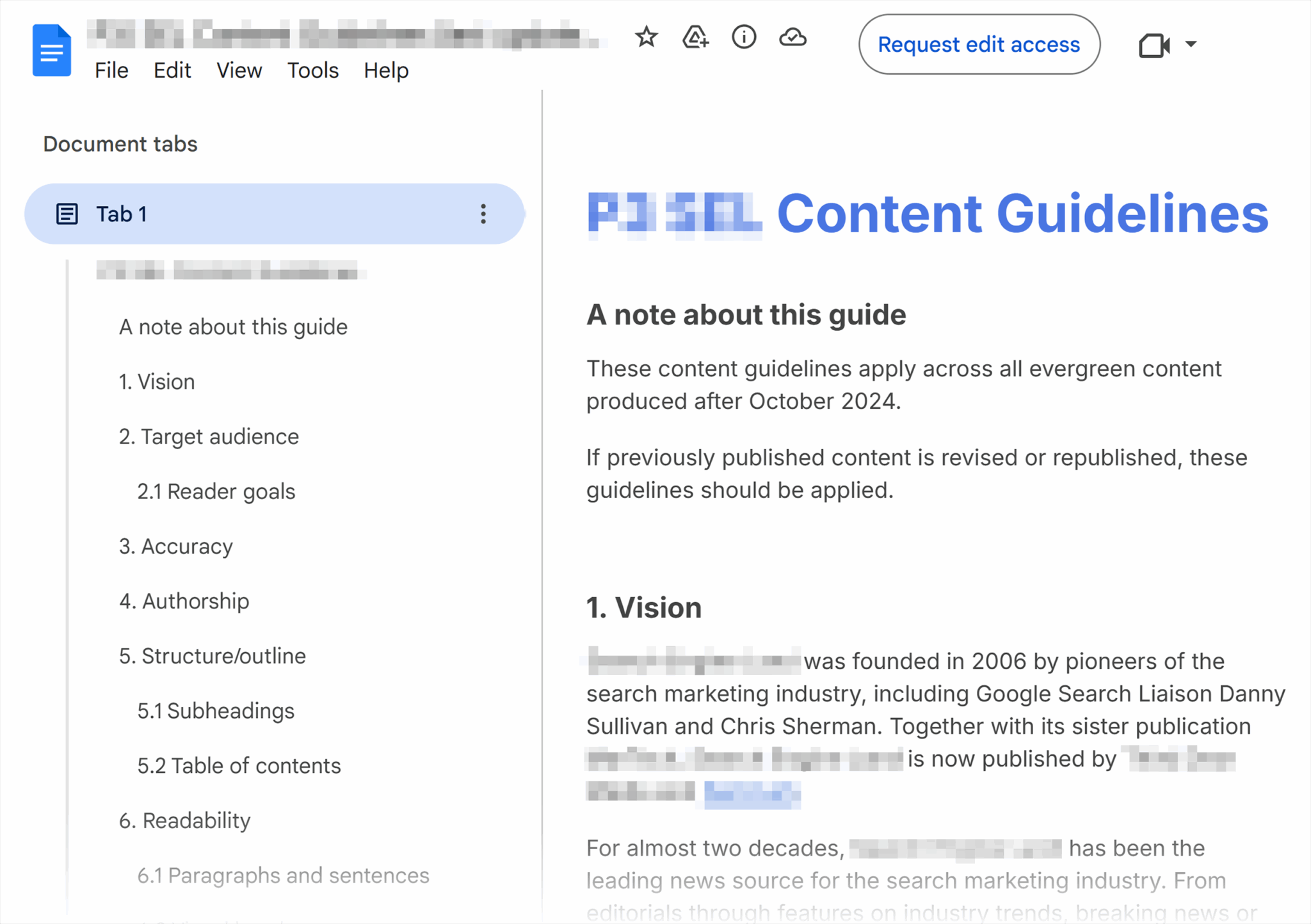
Guardrails for topic selection and brand voice
- What they solve: content that ranks for the wrong intent or reads off-brand
- Make it real: define search intents I will target, buyer stages I support, and topics I will not chase
- Owner: content lead with sales enablement
- Payoff: stronger close rates from organic leads
Data quality rules
- What they solve: reports that do not match and broken attribution
- Make it real: UTM naming rules, GA4 event names, CRM field mapping, and a monthly data check slot
- Owner: analytics lead with RevOps
- Payoff: trust in dashboards and confident budget decisions
Change control
- What they solve: risky site changes breaking rankings
- Make it real: staging parity requirements, SEO signoff rules for redirects and navigation edits, and rollback steps
- Owner: technical owner with SEO lead
- Payoff: fewer sudden drops and faster fixes
Approval workflows that protect speed and quality
Four stages with simple SLAs
-
Brief
- Artifact: one brief with search intent, target terms, SME notes, outline, and a success metric
- SLA: 24 hours to approve
- Approver: content lead
-
Draft
- Artifact: doc with sources, internal links planned, and questions for the expert
- SLA: five business days for a standard article (longer only if expert interviews are needed)
- Reviewer: editor, then SME as needed
-
SEO QA
- Artifact: checklist and QA log covering title tag, H1, structure, schema, internal links, images and alt text, and URL
- SLA: 48 hours
- Approver: SEO lead as single approver to prevent stalls
-
Publish
- Artifact: CMS record, change log, and final checks in staging
- SLA: same day after QA passes
- Owner: publisher in content or web team

Tooling note: I keep approvals and QA inside my work-management tickets so I have an audit trail.
Systems that tie SEO to revenue
I want a lean, ROI-focused stack that fits B2B service motions and ties to revenue.
Core stack that gets the job done
- Research and competitor tracking: Ahrefs or Semrush
- Crawl and audits: Screaming Frog for deep checks; a cloud crawler if I need scale
- On-page automation: Rank Math or Yoast SEO in WordPress, or equivalent modules in Webflow or HubSpot CMS
- Schema tools: built-in options, or Schema App for complex use
- Dashboards: Looker Studio connected to GA4, GSC, and my CRM
- Event tracking: GA4 with clear events for demo, contact, and asset downloads
- CRM tie-in: HubSpot or Salesforce to attribute leads, pipeline, and wins back to pages and queries
Three quick automation wins
- Meta templates: I set title and meta rules by template so new pages do not ship with blanks
- Internal linking: I use a related-content component fed by tags or a curated list to pass authority to money pages
- Redirects: I keep a central redirect rule set in Git or my CMS and batch publish with each release to avoid dead ends
Why CRM attribution matters
Organic traffic is not the prize. Revenue is. I push page and session details into my CRM so I can answer: Which content hub sourced the most SQLs this quarter? How many deals touched the pricing page before close? What search terms correlate to higher win rates? That is how I keep budget safe when priorities shift.
A small note on trends
Zero-click results and AI summaries keep growing. That is fine. Service firms win by owning the questions buyers ask during research and by showcasing proof. I focus topic clusters around use cases, comparisons, pricing, case studies, and original data.
Schema and CMS: make best practice the default
Schema is one of the easiest ways to help search engines read my content. For services, I standardize a small set and bake it into templates. If needed, I point editors to Google's overview of structured data.
Core types to standardize
- Organization with logo, sameAs links, and contact points
- Service for practice areas or service pages, with serviceType, areaServed, and description
- FAQPage for support content and bottom of key pages if I truly answer real questions
- Article for blog posts with author, datePublished, and headline
How I template it
- I add JSON-LD blocks in CMS templates with fields mapped to CMS data
- I expose simple fields for editors like primaryService, expertiseTags, and caseStudyRef
- For case studies, I include Review or AggregateRating only if I have real data that meets platform rules
Quality checks
- I validate in the Rich Results Test as part of the publishing pipeline
- I track schema coverage by template in my audit tool
- I recheck after theme or plugin updates, since changes can wipe fields
Use cases that punch above their weight
- Practice-area pages marked with Service and strong internal links often jump faster
- FAQPage on comparison or pricing pages reduces pogo-sticking and picks up long-tail queries
- Articles with proper Article and breadcrumbs tend to get better sitelinks and CTR
Make the CMS do the right thing by default
- Monolith CMS (WordPress, Webflow, or HubSpot CMS): I use built-in fields for titles, descriptions, canonicals, Open Graph, and schema, and I lock required fields so nothing ships empty
- Headless (Contentful or Sanity): I separate content from views and keep reusable modules, which helps if I publish across multiple front ends or have strict design rules
Release with confidence
- Staging parity with production so I catch indexing rules, redirects, and schema before go-live
- SEO checks in CI/CD: I run a small crawler or linter on staging and block releases on critical errors like noindex on live templates, broken canonicals, or missing H1s
- I keep a change log; when rankings move, I need to know what shipped that day
Reality check - and the payoff
I will still run into hard tradeoffs. A subject-matter expert is tied up. Dev has a release freeze. Budgets shift. That is normal. The cure is boring and effective: one owner, one backlog, simple rules, and shared KPIs that reach the pipeline. I keep work small, ship often, and talk weekly. In one quarter, I see search terms turn into meetings. In two, those meetings turn into revenue. And I do not have to micromanage to get there.

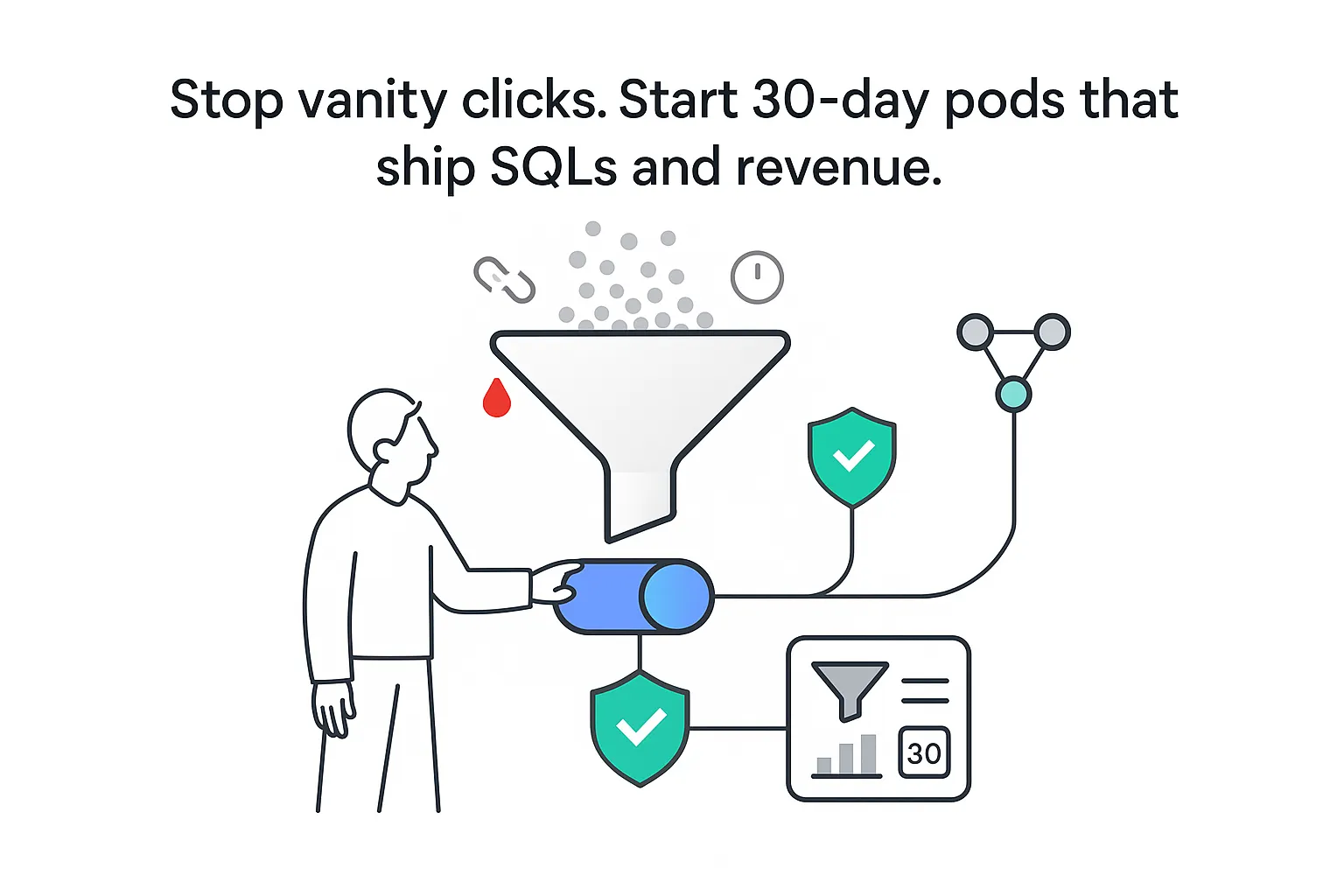

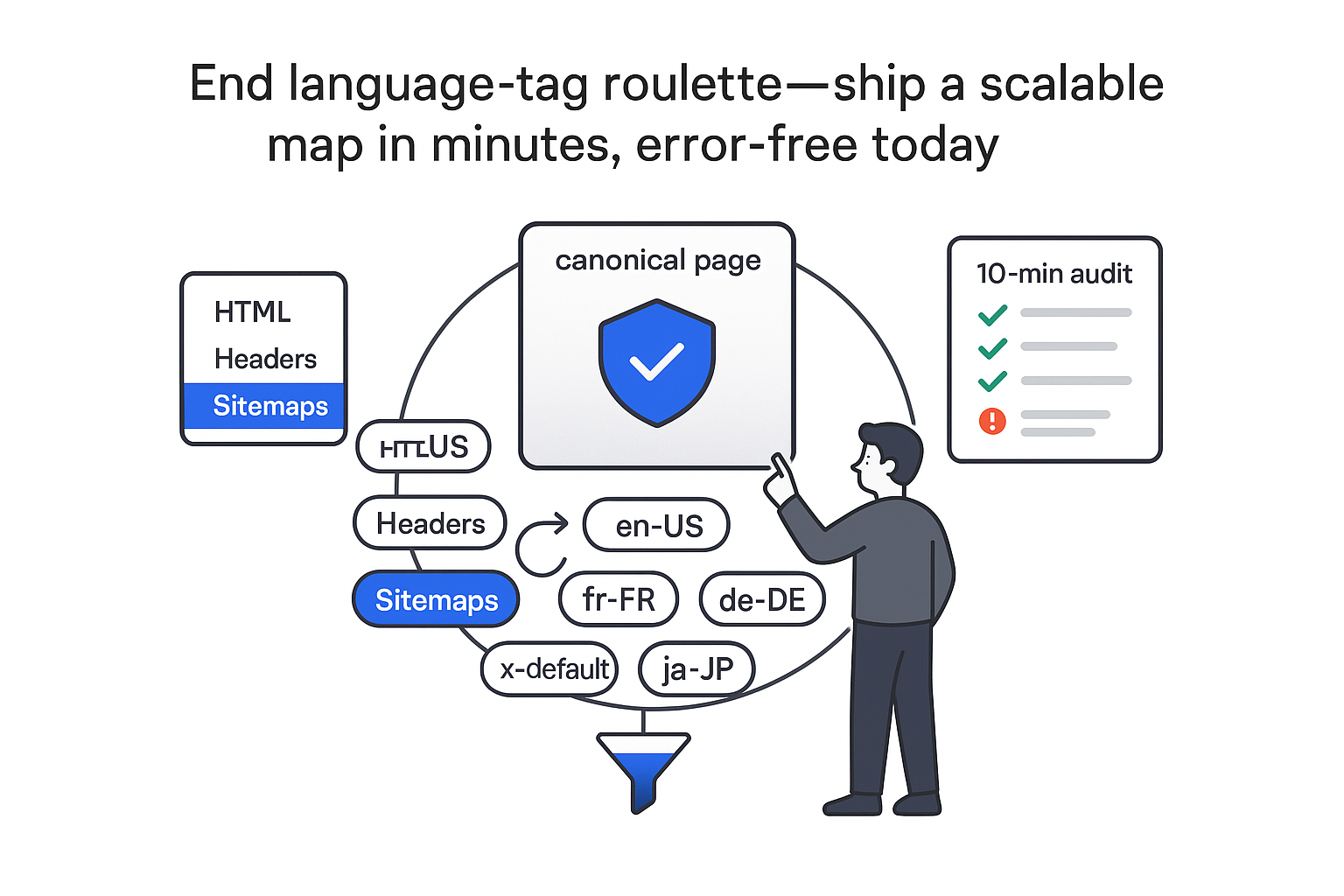
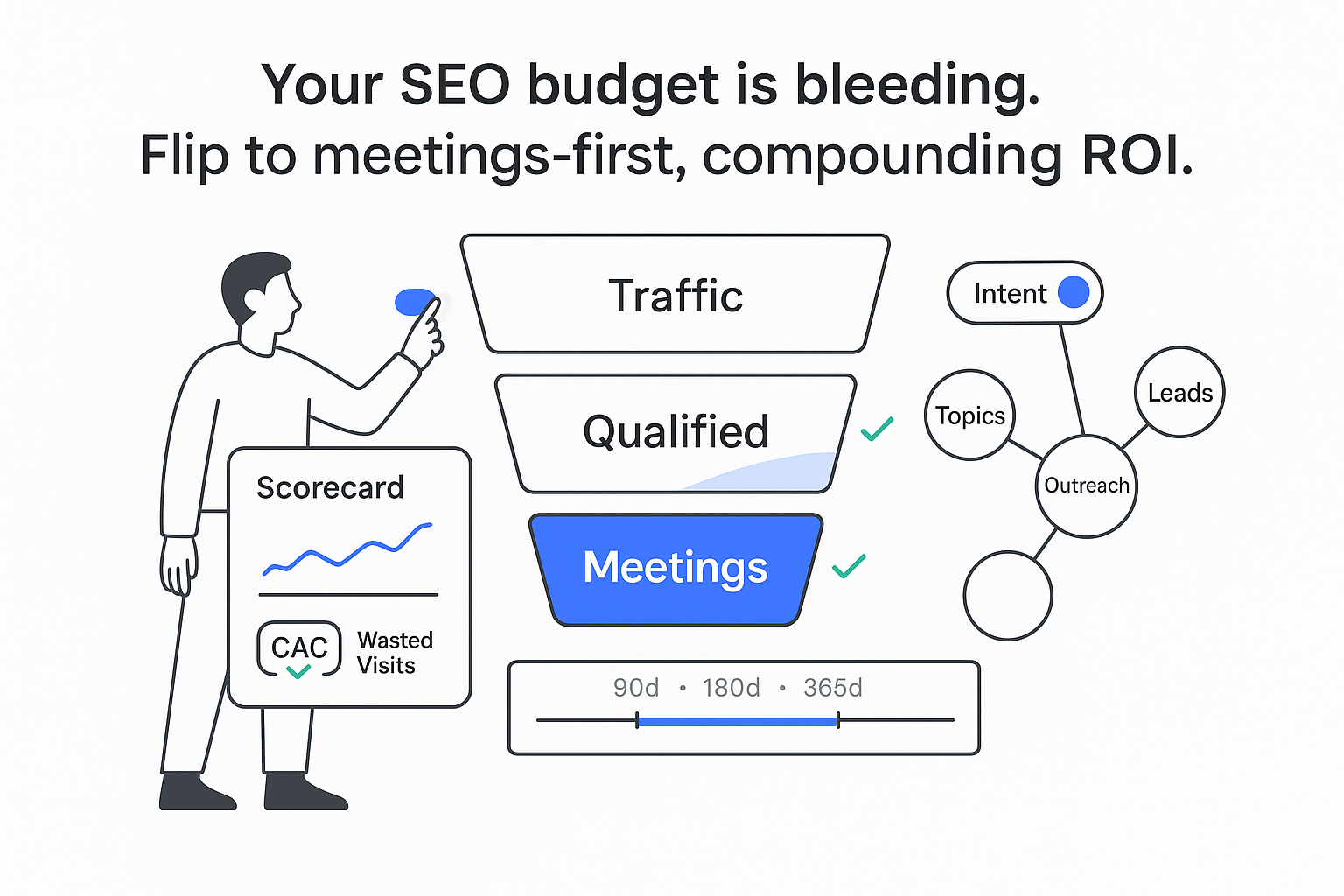

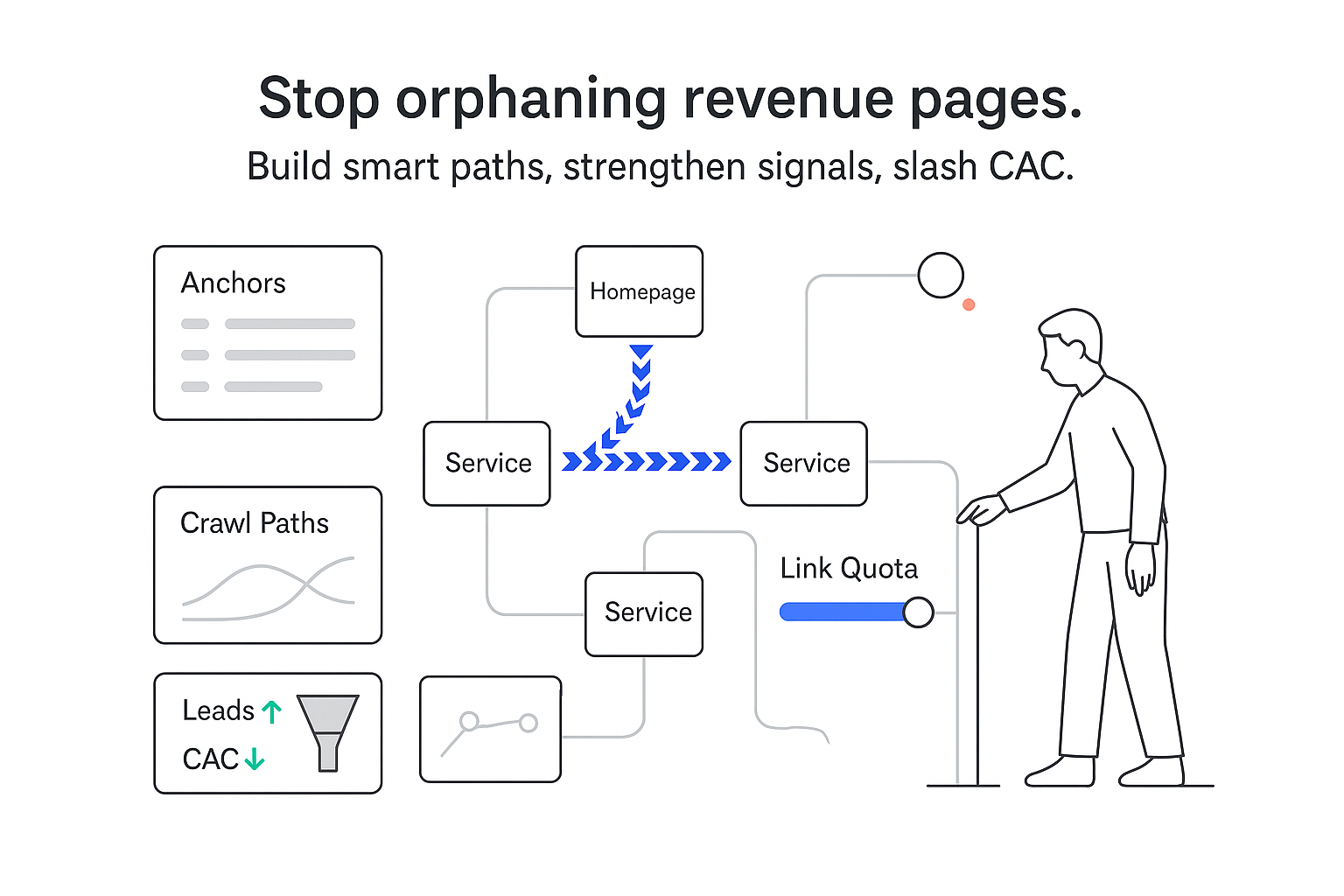
.svg)